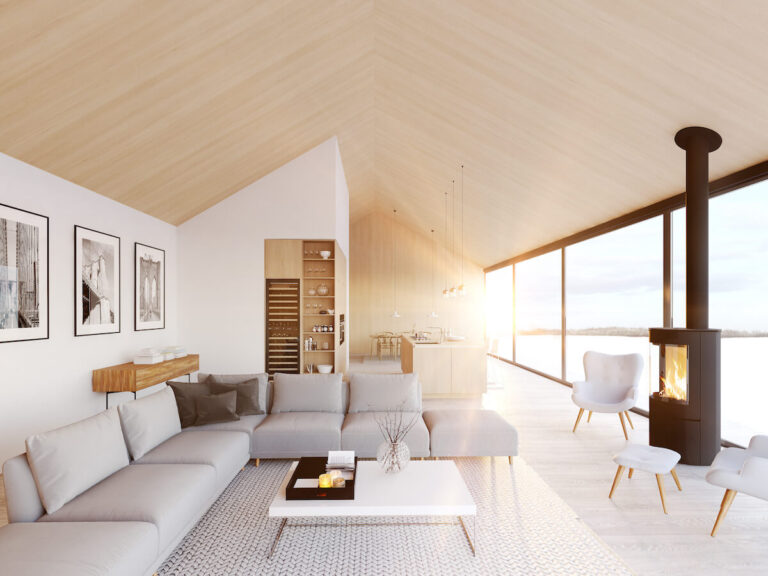
Scandinavian style is one of the most popular and well-known interior design styles today. Originating from Nordic countries such as Norway, Sweden, Denmark, and Finland, it has distinctive characteristics that set it apart from other design styles. In this article, we will explore the key features and principles of this style.
Key Features of Scandinavian Style
Simplicity and Minimalism: One of the core principles of Scandinavian style is simplicity and minimalism. This style avoids complex and cluttered designs, focusing on clean lines and straightforward layouts. Everything has its place, and nothing is excessive.
Light and Natural Colors: The dominant colors in this style are white, beige, light gray, and earthy tones. The goal is to create light, airy spaces. These soft, natural hues help improve natural light flow within the space, which is a crucial aspect of the style.
Use of Natural Materials: Natural materials like wood, cotton fabrics, wool, and leather are widely used in Scandinavian design. Wood, in particular, is used for furniture, flooring, and walls. These materials not only add natural beauty but also provide warmth and comfort to the environment.
Natural Light: Natural light is essential in Scandinavian style. Given that Nordic countries experience limited daylight during certain seasons, designers focus on maximizing the available natural light. Large windows, light curtains, and light colors help reflect and enhance natural light in the space.
Functionality and Comfort: Scandinavian style emphasizes functionality. Furniture must be comfortable and practical. Elaborate designs and unnecessary decoration are avoided. Furniture pieces are typically simple, understated, and suitable for use in all seasons.
Beautiful and Decorative Details: Although Scandinavian style emphasizes simplicity, decorative details still play an important role. These details can include simple picture frames, small vases, or woolen rugs that make the space more inviting and cozy.
Principles of Scandinavian Design
- Open Spaces: Open, free-flowing spaces are key in Scandinavian design. Walls and furniture are arranged to allow for maximum movement and use of the area.
- Combination of Modern and Traditional Elements: This style blends modern and traditional designs, creating a space that feels both contemporary and warm, reminiscent of traditional homes.
- Use of Plants: Plants are an essential detail in Scandinavian interiors. They add life and color to the space and contribute to a cohesive design.
Conclusion
Scandinavian style in interior design has become one of the most popular styles due to its simplicity, functionality, and the tranquility it creates. The use of light colors, natural materials, and natural light makes these spaces not only beautiful but also practical and comfortable. For those seeking a serene and uncluttered environment, this style is an ideal choice.


No comments yet.